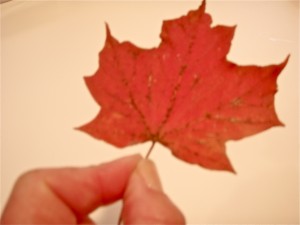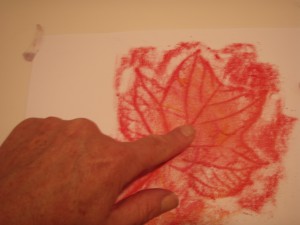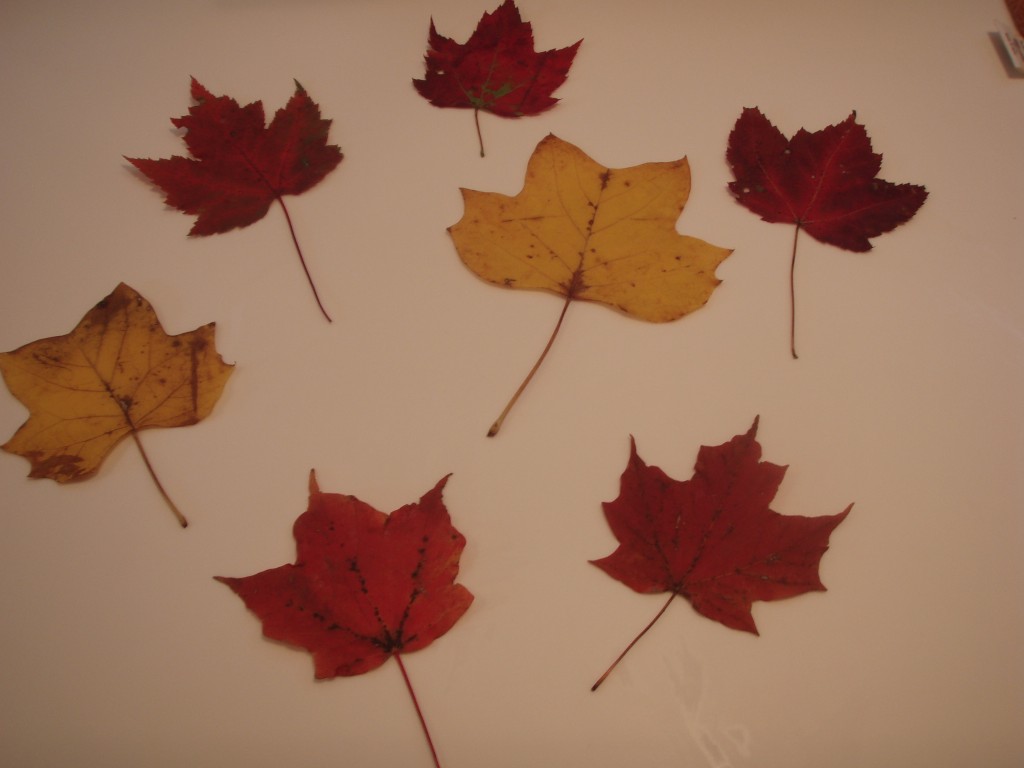Leaf Collecting is a time honored tradition of childhood. Shuffling though piles of leaves and searching for the most beautiful specimens can be a delight for children. Bending over to pick up each spied treasure and making a bouquet of the collection can easily fill an afternoon. Here are some benefits of leaf collecting:
- Visual focus: searching for perfect, beautiful and unique leaves requires visual attention.
- Increase hand and finger strength: picking up and holding the “bouquet of leaves” requires sustained muscle action in the hands.
- Improving hand dexterity: picking up the stems requires a refined pincer grasp
- General health: provides a reason to stay outside-absorbing Vitamin D and getting fresh air.
- Bending over stimulates the vestibular system, which helps organize the body.
- You can NOT take a walk, look for and retrieve leaves AND use an electronic device effectively and simultaneously.
- For the ambitious, gathering a lot of leaves requires holding a bag, basket or box. This brings bilateral motor coordination into play.
Leaf Art is simple and can be done from the toddler years on. Here’s how:
Toddlers:
- Place a leaf on a flat surface and tape lightweight paper (inexpensive copy paper will do) securely over the leaf. Place a chunky crayon* or chalk** on its side in the middle of the paper.
- Show the child how to hold with both hands, using the finger tips. Move the chalk up and down over the paper. An impression of the leaf should emerge.
- The adult can color the paper with chalk and help the toddler point the index finger and rub the chalk colors to blend. This helps strengthen the index finger and is a good tactile experience.
Preschool:
- The same methods described above can be employed.
Using two hands and finger tips helps to reinforce bilateral skills and builds strength in the fingers for holding a pencil.
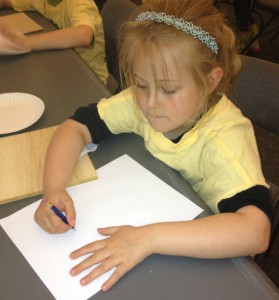 The child can also begin to hold the chalk or crayon with the fingers in a typical grasping pattern and scribble over the paper.
The child can also begin to hold the chalk or crayon with the fingers in a typical grasping pattern and scribble over the paper.
Kindergarten: Any of the above methods can continue.
- Demonstrate how to tape the paper. This teaches independence for the steps required to complete the activity.
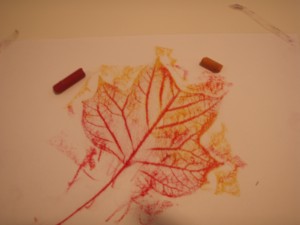 The Kindergarten student may want to arrange leaves and mix colors.
The Kindergarten student may want to arrange leaves and mix colors.
Elementary:
- The child should be able to hold the paper still rather than taping it down. This helps develop bilateral reciprocal skills for writing.
- Older the child can be creative in mixing colors, leaf arrangement and design.
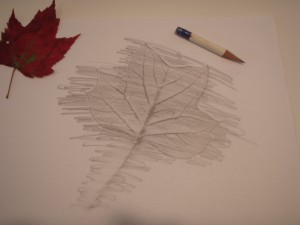 Simple use of a pencil is a nice way for children to build tolerance for holding a pencil correctly without the aggravation of writing letters.
Simple use of a pencil is a nice way for children to build tolerance for holding a pencil correctly without the aggravation of writing letters.
*Pastel chalk works much better than regular board chalk. ** Craypods work better than crayons.
These art supplies may be worth investing in.
